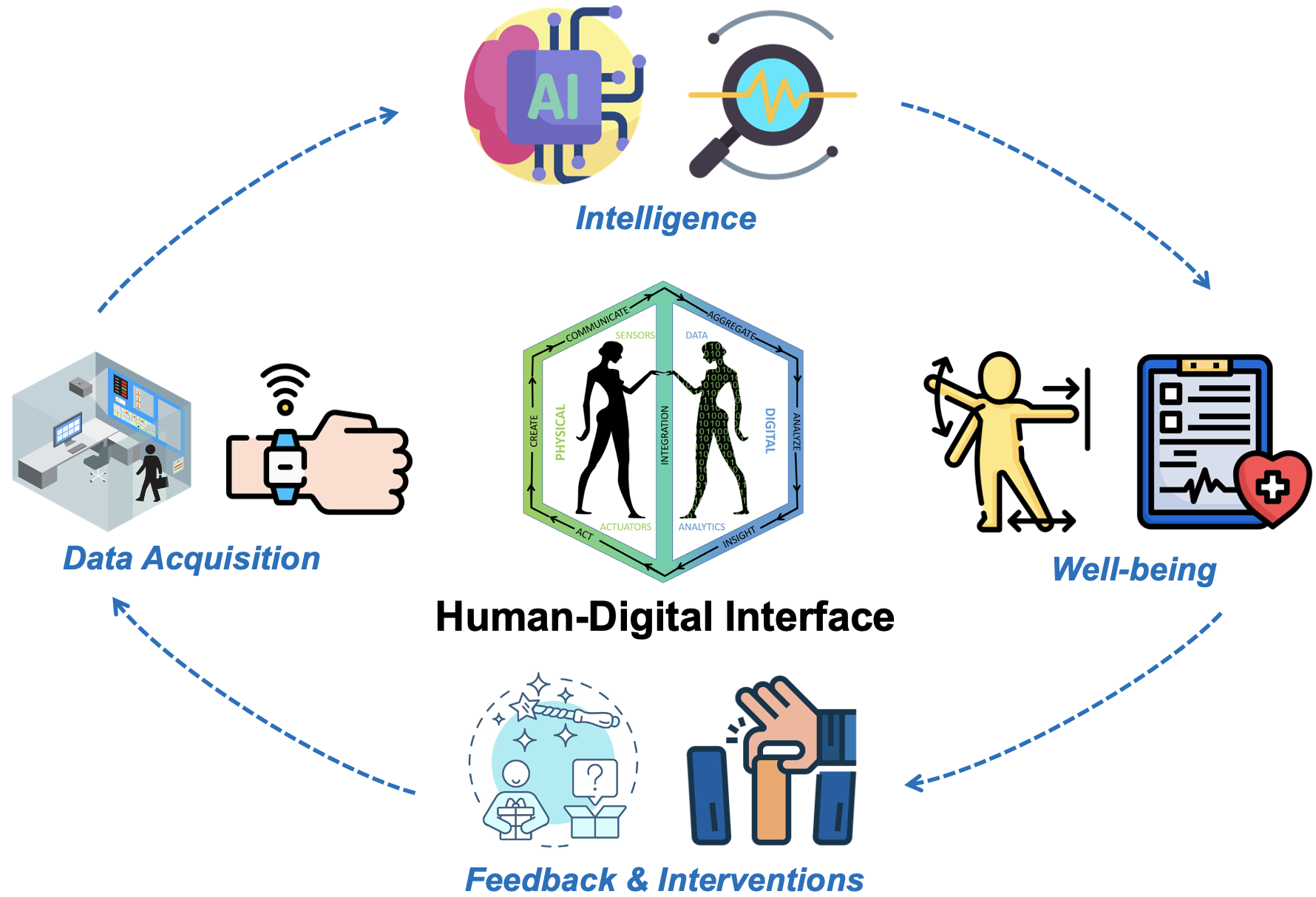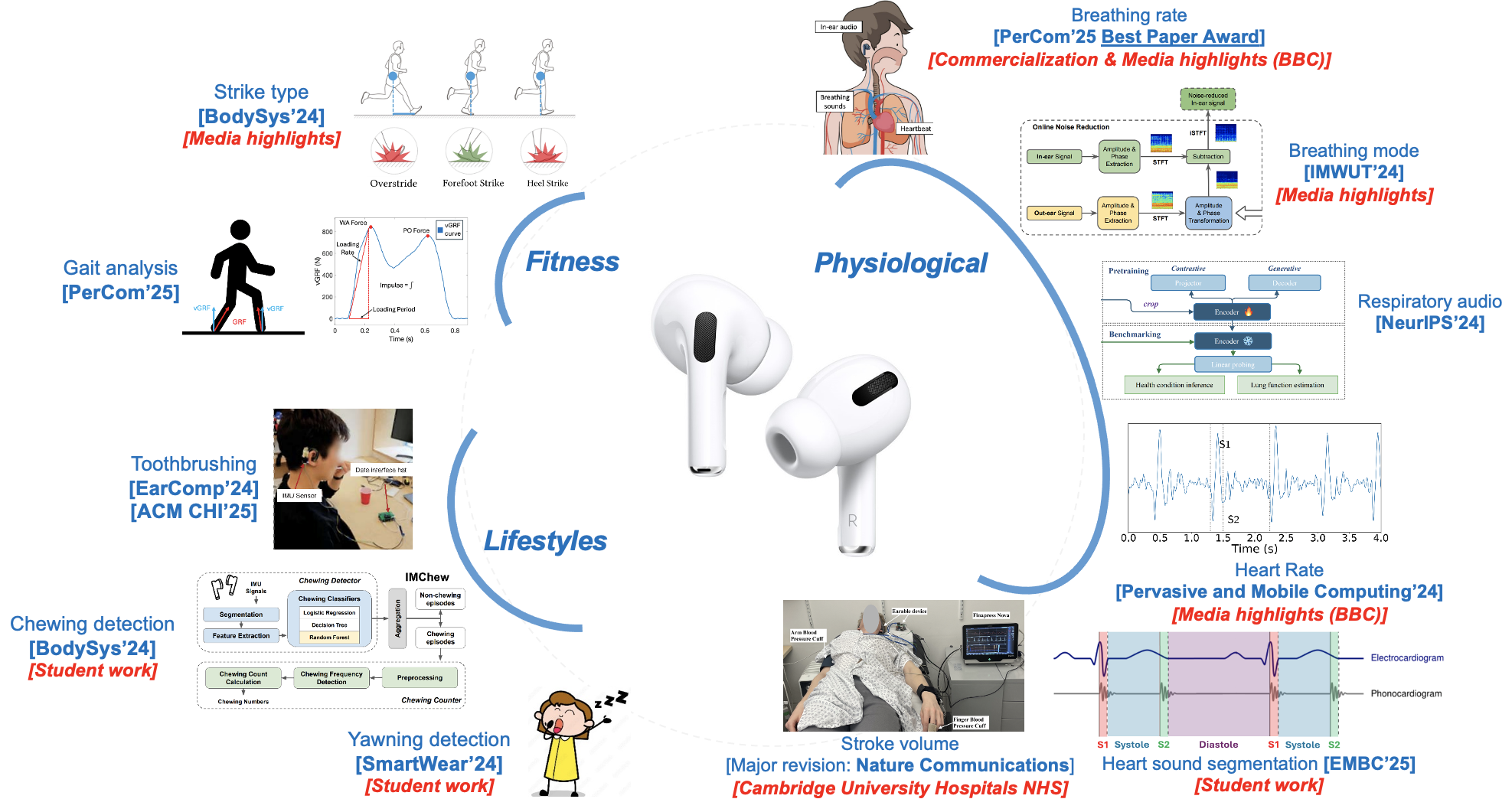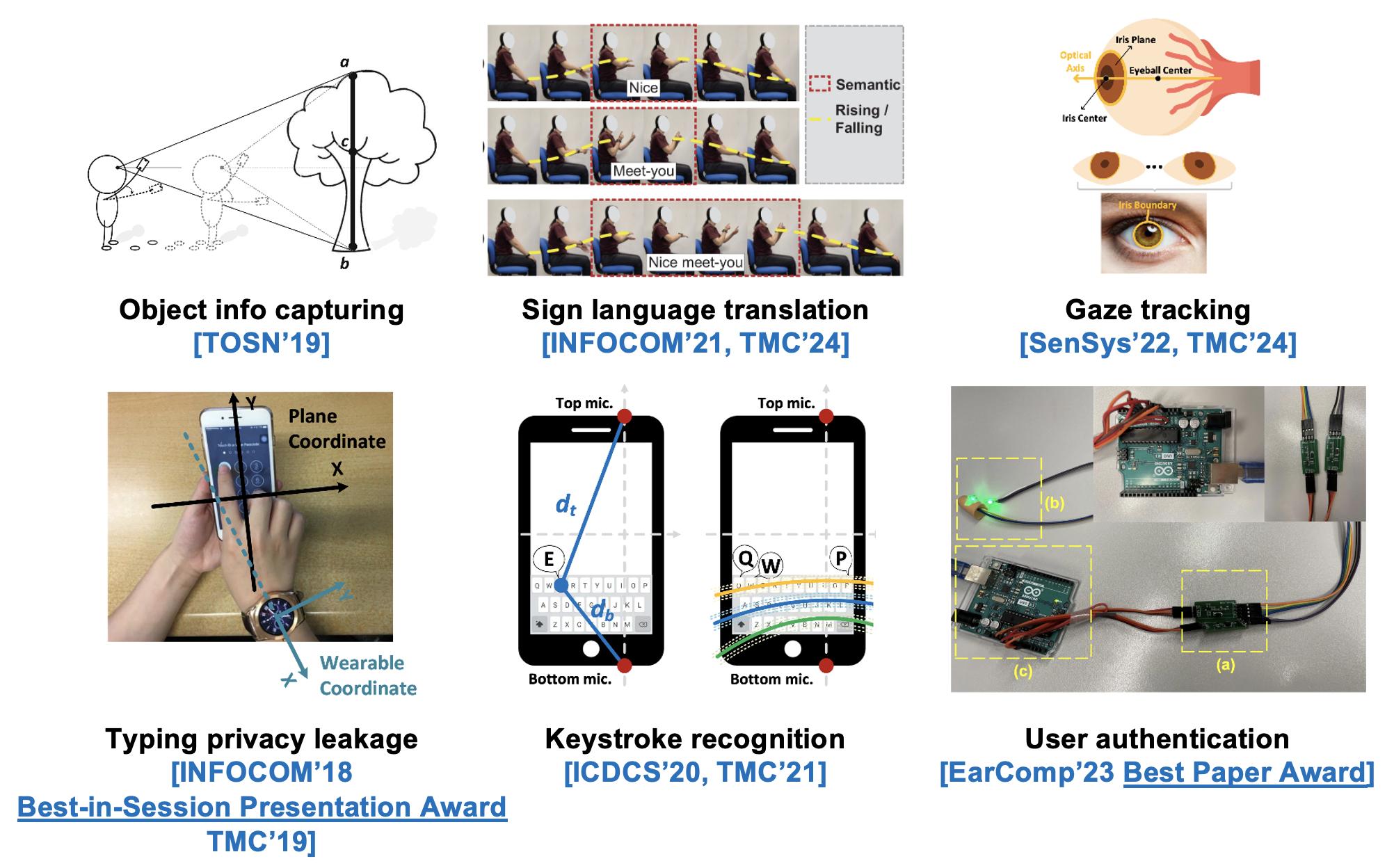Research & Projects

Human Behavior Sensing
To enable ubiquitous, practical, and user-friendly perception models, this research explores the full potential of existing wearable sensors (devices) to perceive and understand human behaviors [MobiSys’19, IMWUT’21, TMC’24]. Rather than relying on excessive sensor deployment to cover all to-be-sensed areas of the human body, this line of work investigates a central question: Is it possible to perceive and understand fine-grained human behaviors using as few wearable sensors (devices) as possible?

Human Wellness Monitoring
This research gathers insights into human health [SmartWear’23, EarComp’24, BodySys’24, Pervasive and Mobile Computing Journal’24, IMWUT’24, NeurIPS’24, PerCom’25 Best Paper Award, PerCom’25, CHI’25, Nature Communications’25, IMWUT’25]. It primarily leverages earphones as versatile tools for tracking human wellness in diverse, real-world settings—enabling robust physiological and fitness monitoring and promoting healthier lifestyles. The work theoretically establishes and quantifies the relationships between physiological activities and biosignals collected near the ears, including acoustic and motion signals, and conducts in-depth analyses of interactions between physiological systems to uncover critical insights into their complex dynamics. These insights support the decoupling of intricate biosignals and the development of robust methods for accurate, non-invasive wellness monitoring.

Interaction with Physical World
This research also seeks to enhance human interactions with the physical world. First, by leveraging human-ambience interactions, it enables the capture and preservation of information about physical objects within digital spaces [TOSN’19]. Second, it develops and implements natural interaction technologies—such as gaze tracking via smartphones [SenSys’22, TMC’24] and sign language translation using smartwatches [INFOCOM’22, TMC’24]—to create more seamless and accessible ways for humans to engage with their surroundings. In addition, the work reveals and demonstrates critical privacy leakage issues that arise during interactions with the physical world, serving as a timely warning to the public [INFOCOM’18, TMC’19, ICDCS’20, TMC’21]. To address these concerns, a secure authentication system has been proposed to enhance user privacy and strengthen security [EarComp’23 Best Paper].

